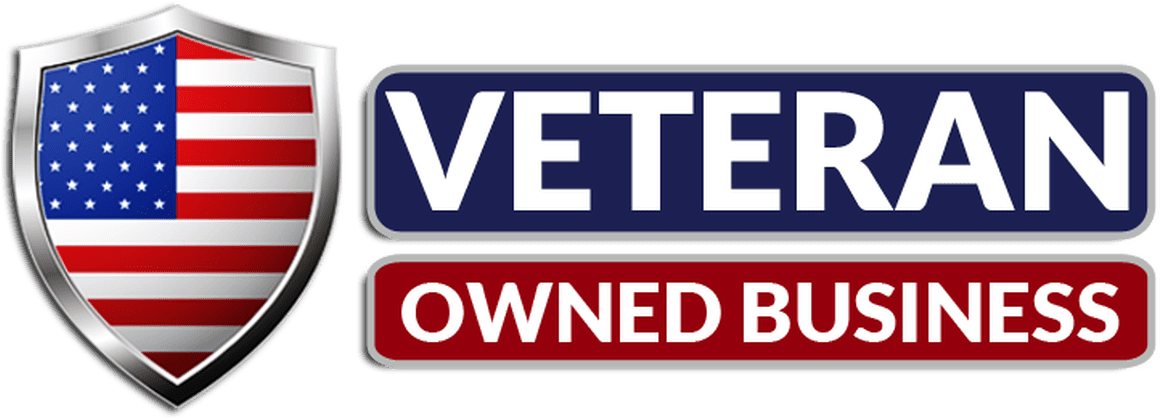The Ultimate Technical SEO Checklist for Entrepreneurs

Are you an entrepreneur looking to optimize your website for better search engine rankings?
Technical SEO can be a daunting task, but having the right technical SEO checklist is essential.
From keyword research and optimization to page speed improvement and image compression techniques, there are many steps that need to be taken in order for your website to rank higher on SERPs. Let’s explore some of these key concepts further so you can maximize your chances of success with technical SEO.
Table of Contents:
- Technical SEO Basics
- Keyword Research & Optimization
- Website Architecture & Structure Optimization
- Page Speed Optimization; Crawling Efficiency Improvement
- Image Optimization; Compression Techniques for Improved User Experience & Rankings in SERPs
- FAQs in Relation to Technical Seo Checklist
- Conclusion
Technical SEO Basics
Technical SEO is the process of optimizing a website for search engine crawlers and users. It involves improving the structure, navigation, and page speed of a website to ensure it is optimized for search engine rankings and user experience.
Want to know SEO Basics? The SEO for Beginners Series
What is Technical SEO?
Technical SEO includes all aspects of optimizing a website that are not related to content optimization. This includes things like creating an effective site structure and navigation system, ensuring mobile-friendliness and responsiveness of the website design, minimizing page load times and server response times to improve user experience, increasing crawlability by improving robots exclusion protocols (REP) and XML sitemaps implementation, utilizing browser caching to reduce server loads and improve page speed performance, compressing images to reduce file size without sacrificing quality, utilizing alt text tags to describe images for accessibility purposes, as well as implementing lazy loading techniques in order to increase page speed performance.
All these technical elements help make sure that your web pages are indexed correctly by search engines so they can be found in SERPs (Search Engine Results Pages).
Benefits of Technical SEO
The main benefit of technical SEO is improved visibility in SERPs which leads directly into increased organic traffic from potential customers who may have otherwise never known about your business or services.
Additionally, technical optimizations can also lead to better user experiences as pages will load faster due lack of large image files or other unnecessary code slowing down the webpage’s loading time.
Last but most importantly having an optimized site architecture helps search engine crawlers index your webpages more efficiently leading them higher up on SERP rankings than competitors with less optimized websites thus helping you gain more exposure online.
Types Of Technical SEO
Technical SEO is an important part of a successful digital marketing strategy. With the right keyword research and optimization techniques, you can get your website to rank higher in search engine results and increase traffic. Let’s move on to Keyword Research & Optimization for more tips.
Keyword Research & Optimization
Keyword research and optimization are essential components of any successful technical SEO strategy. Identifying relevant keywords is the first step in optimizing content for search engine visibility. This involves researching popular terms related to a business’s services or products, as well as analyzing competitor websites to determine what words they are targeting with their content.
Once relevant keywords have been identified, they can be incorporated into website copy, meta descriptions, title tags, and other areas of the site that will help improve rankings in SERPs.
Optimizing content for targeted keywords is also important when it comes to improving search engine visibility. Content should be written with an eye toward keyword density and placement; too many instances of a keyword could result in penalties from Google while not enough could lead to lower rankings on SERPs.
Using synonyms or variations of target keywords throughout the text can help increase relevance without triggering penalty algorithms from search engines like Google.
Tracking the performance of keywords is key when measuring success within an SEO campaign. Tools such as Google Analytics can provide insights into how often users are searching for specific terms and which pages rank highest for those queries; this data can then be used to refine existing strategies or create new ones based on user behavior patterns observed over time.
Additionally, tracking organic traffic sources through analytics programs provides valuable information about where visitors come from and which sites link back to yours – both factors that influence overall ranking power on SERPs.
Keyword research and optimization are important components of SEO that should not be overlooked. When done correctly, they can help you attract more qualified leads to your website. Now let’s move on to optimizing the website architecture and structure for better SEO performance.
Website Architecture & Structure Optimization
Having a well-structured website architecture is essential for achieving optimal search engine rankings and user experience. Creating an effective site structure and navigation system helps visitors find the information they need quickly and easily while improving internal linking structure and URL structures can help boost your SEO efforts.
Additionally, ensuring mobile-friendliness and responsiveness of the website design is critical to ensure that users on all devices have a great experience when visiting your site.
Creating an Effective Site Structure & Navigation System
It’s important to create a logical hierarchy for your website content so that visitors can easily find what they are looking for without having to click through multiple pages or menus. This includes creating clear page titles, organizing content into categories, using breadcrumbs as needed, making sure menu items are easy to understand, etc.
Improving Internal Linking Structure & URL Structures
Internal links are one of the most important elements in SEO as they allow search engines to crawl deeper into your website’s content more efficiently. Make sure you use descriptive anchor text when linking internally so that both humans and bots can understand what each link points towards.
Make sure you use short URLs with keywords included whenever possible as this will also help improve rankings in SERPs (Search Engine Results Pages).
Optimize for Mobile
With more people accessing websites from their phones than ever before, it is absolutely crucial that you optimize your website design for mobile devices as well. This means making sure all images scale properly on smaller screens, reducing load times by compressing files where necessary, optimizing font sizes, spacing, line heights etc., and avoiding popups or intrusive ads which could be difficult to close on small screens.
Proper website architecture and structure optimization is essential for improving search engine rankings, user experience, and page speed performance. Moving on to Page Speed Optimization & Crawling Efficiency Improvement, let’s explore how to further enhance the efficiency of your website.
Page Speed Optimization & Crawling Efficiency Improvement
Page speed optimization is an essential part of digital marketing for entrepreneurs. It can be the difference between a successful website and one that fails to attract visitors. Page load times and server response times should be minimized in order to improve user experience, as well as rankings in SERPs (Search Engine Results Pages).
Browser Caching
Implementing browser caching can reduce server loads while also improving page speed performance. Browser caching stores certain elements of a webpage so they don’t have to be reloaded each time someone visits the site, which reduces loading time significantly.
It is important for entrepreneurs to understand how page speed optimization works if they want their websites to perform well in search engine results pages. Taking steps such as minimizing page load times and server response times, and utilizing browser caching are all effective ways of optimizing page speeds for better performance on SERPs.
By properly optimizing page speed and crawlability, entrepreneurs can ensure that their website is performing optimally and providing a great user experience. Now, let’s discuss image optimization & compression techniques to further improve SERP rankings.
Image Optimization & Compression Techniques for Improved User Experience & Rankings in SERPs
Optimizing images for improved user experience and rankings in SERPs is an important part of any digital marketing strategy. Compressing images to reduce file size without sacrificing quality can help ensure that pages load quickly, which will improve the overall user experience.
Alt Tags
Utilizing alt text tags to describe images also helps with accessibility purposes as it allows users who are visually impaired to understand what the image is about. Additionally, implementing lazy loading techniques can increase page speed performance by only loading images when they come into view on a page instead of all at once.
Compressing Images
Compressing images is one of the most effective ways to optimize them for better performance and user experience. This involves reducing their file size while maintaining good quality so that pages load faster and use less bandwidth. There are many tools available online such as TinyPNG or ImageOptim which allow you to compress your images easily and quickly without having to manually edit each one individually.
Alt text tags provide a description of an image so that users who are visually impaired can understand what it’s about using screen readers or other assistive technologies. It’s important not just from an accessibility standpoint but also from an SEO perspective since search engines take this information into account when ranking websites in SERPs (Search Engine Results Pages). When adding alt text tags, make sure they accurately describe the content of the image while keeping them concise yet descriptive enough for both humans and machines alike.
FAQs in Relation to Technical Seo Checklist
What is included in technical SEO?
It involves activities such as improving page speed, creating an XML sitemap, setting up 301 redirects, optimizing titles and meta descriptions, using structured data markup (Schema), fixing broken links and images, ensuring that URLs are crawlable by search engines, and more. All these tasks help make sure that your website is properly indexed by search engines so it can be found when users type relevant queries into them.
What is a technical SEO audit checklist?
A technical SEO audit checklist is a set of criteria used to evaluate the technical aspects of a website. It includes items such as page speed, mobile optimization, indexing and crawlability, URL structure, server setup and response codes, sitemaps and robots.txt files, structured data markup (schema), security protocols (HTTPS/SSL), and more. All these elements are essential for ensuring that search engines can properly access your site’s content so it can be indexed accurately in their results pages. A comprehensive technical SEO audit will help entrepreneurs identify any issues that may be preventing their websites from performing optimally in organic search engine rankings.
What are the 7 types of SEO?
1. On-Page SEO: This type of SEO focuses on optimizing individual web pages in order to rank higher and earn more relevant traffic from search engines. It includes activities such as keyword research, content optimization, URL optimization, meta tag creation, and image optimization.
2. Off-Page SEO: This type of SEO involves building backlinks from other websites to your own website in order to increase its authority and rankings in the SERPs (Search Engine Results Pages). Activities include link building, guest blogging, directory submissions, and social media marketing.
3. Technical SEO: This type of SEO focuses on improving a website’s technical infrastructure so that it can be crawled by search engine bots easily and accurately index all its content for ranking purposes. It includes activities such as site speed optimization, mobile responsiveness checks, and structured data implementation.
4. Local SEO: This type of SEO is used to optimize businesses for local searches related to their products or services within a specific geographic area or city/town/region etc. It includes activities such as creating local business listings with accurate NAP (Name Address Phone) information across various directories like Google My Business etc. and optimizing page titles & descriptions for local keywords.
5. Voice Search Optimization: As voice search becomes increasingly popular among users due to the convenience it offers them while searching online using devices like Amazon Echo & Google Home; this type of optimization helps businesses target these types of queries better by making sure their websites are optimized accordingly with appropriate content & structure that can help them rank better when someone searches using voice commands instead of typing out words into a search box.
6. Image Optimization: Images play an important role when it comes to user engagement & experience on any website; hence this kind of optimization helps make sure images are properly optimized both technically (size-wise) & strategically (with proper alt tags) so they can help boost overall rankings too along with providing great user experience at the same time.
7. Content Marketing Optimization: Last but not least, this form of optimization deals with making sure all the content created by businesses is highly targeted towards their intended audience while also being well optimized according to best practices laid down by major search engines; thus helping ensure maximum visibility & reachability through organic channels.
What are the 5 important concepts of SEO?
1. Keyword Research: Identifying relevant keywords to target in order to optimize content and increase visibility on search engines.
2. On-Page Optimization: Ensuring the website is optimized for both users and search engine crawlers, including meta tags, title tags, header tags, alt text and more.
3. Content Creation & Promotion: Creating high-quality content that is valuable to readers while promoting it through various channels such as social media and guest blogging sites.
4. Link Building: Acquiring links from other websites which can help boost rankings in SERPs (Search Engine Results Pages).
5. Technical SEO: Making sure the website is properly indexed by search engines with a sitemap, robots file, and more so that all pages are crawled correctly by Googlebot or Bingbot, etc.
Conclusion
In conclusion, technical SEO is an important part of any digital marketing strategy. By following the technical SEO checklist outlined in this article, entrepreneurs can ensure their website is optimized for search engine rankings and improved user experience. With the right tools and techniques, entrepreneurs can take advantage of all that technical SEO has to offer and stay ahead of the competition.
Don’t forget to keep up with regular updates to your website’s technical SEO checklist as algorithms change over time!
Want more help with your SEO? Check out the SEO Guide for SEO tutorials, videos, resources, and more.
About Digital Marketing Expert Torie Mathis
 Torie Mathis helps entrepreneurs, like you, use digital marketing to grow your business without wasting time, money, or your sanity. She is a best-selling author, Army veteran, speaker + trainer, and your digital marketing coach. You don't need crazy tech skills, buckets of cash, or dedicated staff to market your business. In fact, you don't even need a lot of time. What you need is to be SMART.
Torie Mathis helps entrepreneurs, like you, use digital marketing to grow your business without wasting time, money, or your sanity. She is a best-selling author, Army veteran, speaker + trainer, and your digital marketing coach. You don't need crazy tech skills, buckets of cash, or dedicated staff to market your business. In fact, you don't even need a lot of time. What you need is to be SMART.
Torie hosts SMART AF, a show for non-techy entrepreneurs looking to grow their business, with her husband Sean and is the creator of SMART AF Magazine. Learn from Torie at the Smart Arsenal and on her channel.
What do you think? Let's talk! Leave a comment.
Hi! I'm Torie!
 I help entrepreneurs (like you) use digital marketing to get more clients + make more money. And I make it easy!
I help entrepreneurs (like you) use digital marketing to get more clients + make more money. And I make it easy!
You don’t need crazy tech skills, buckets of cash, or dedicated staff to market your business. You don’t even need a lot of time.
What you need is to be SMART.
Smart Marketing For
Get Smart AF
DELIVERED TO YOUR INBOX
from your Digital Marketing Coach Torie Mathis!
Let's get SMART!
Let's Connect!

*Posts may contain affiliate links. If you use these links to purchase, I may earn a commission at no additional cost to you.


 I help entrepreneurs learn digital marketing.
I help entrepreneurs learn digital marketing.










0 Comments